Feature Engineering
09/28/2022
Robert Utterback (based on slides by Andreas Muller)
Feature Engineering
Coming up with features is difficult, time-consuming, requires expert knowledge. "Applied machine learning" is basically feature engineering.
- Andrew Ng
Interaction Features

Interaction Features



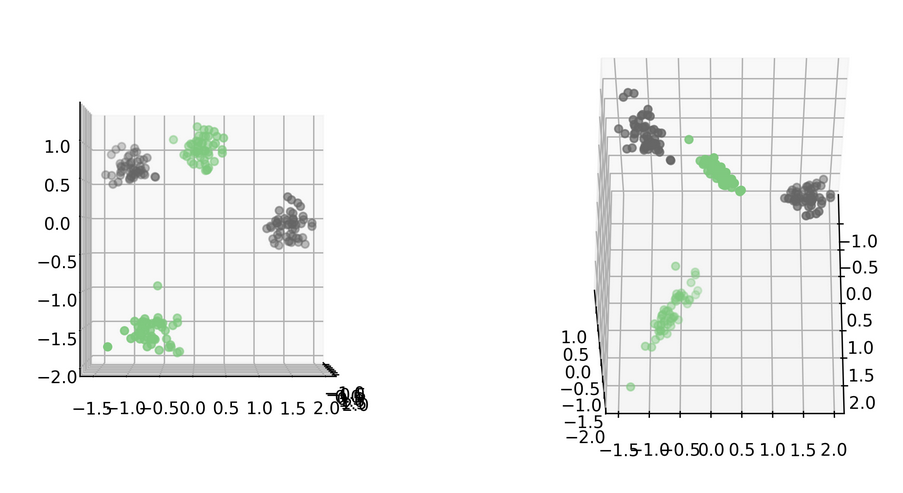
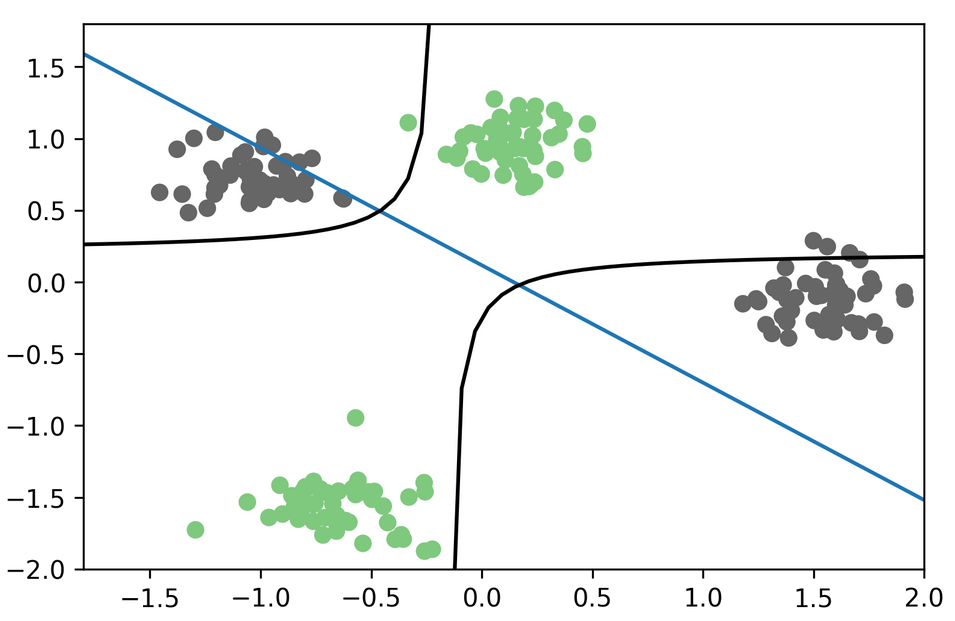
X_i_train, X_i_test, y_train, y_test = train_test_split(
X_interaction, y, random_state=0)
logreg3 = LogisticRegressionCV().fit(X_i_train, y_train)
logreg3.score(X_i_test, y_test)
0.960
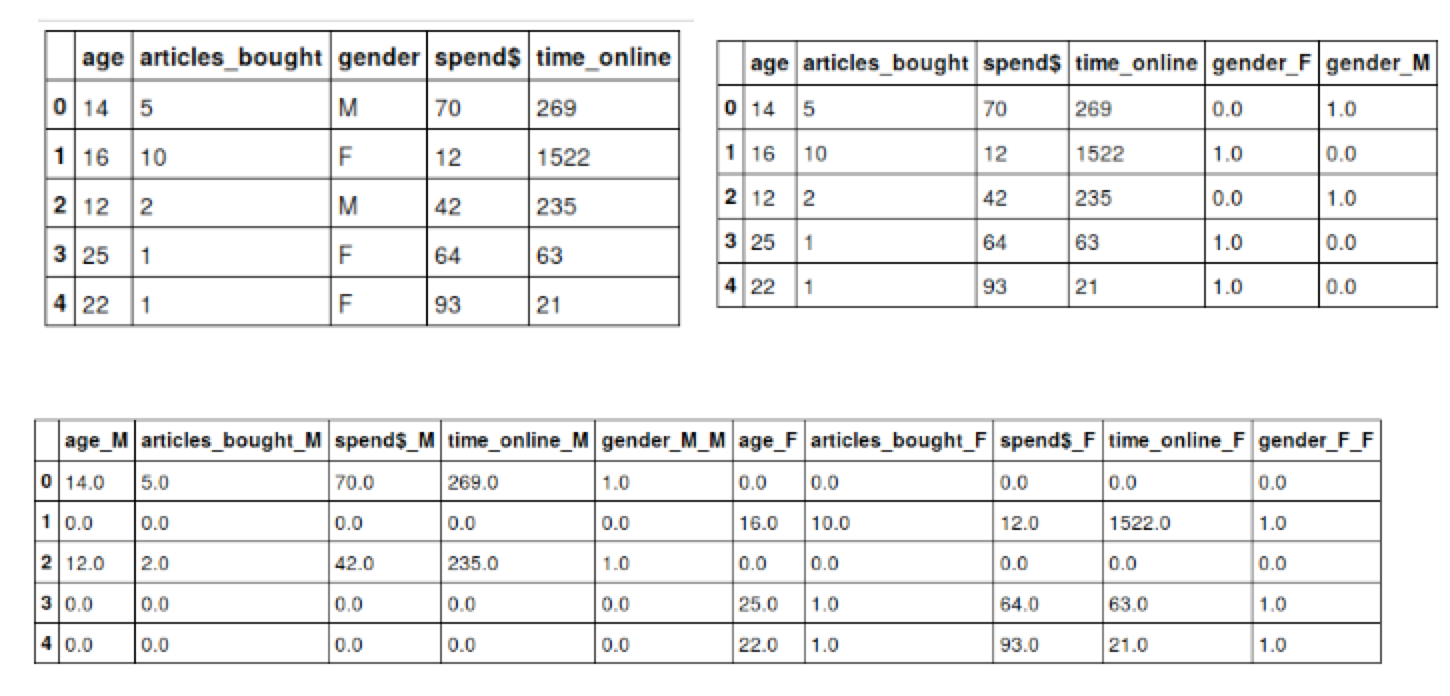
- One model per gender!
- Keep original: common model + model for each gender to adjust.
- Product of multiple categoricals: common model + multiple models to adjust for combinations
More Interactions
age articles_bought gender spend$ time_online + Male * (age articles_bought spend$ time_online ) + Female * (age articles_bought spend$ time_online ) + (age > 20) * (age articles_bought gender spend$ time_online) + (age <= 20) * (age articles_bought gender spend$ time_online) + (age <= 20) * Male * (age articles_bought gender spend$ time_online)
Polynomial Features
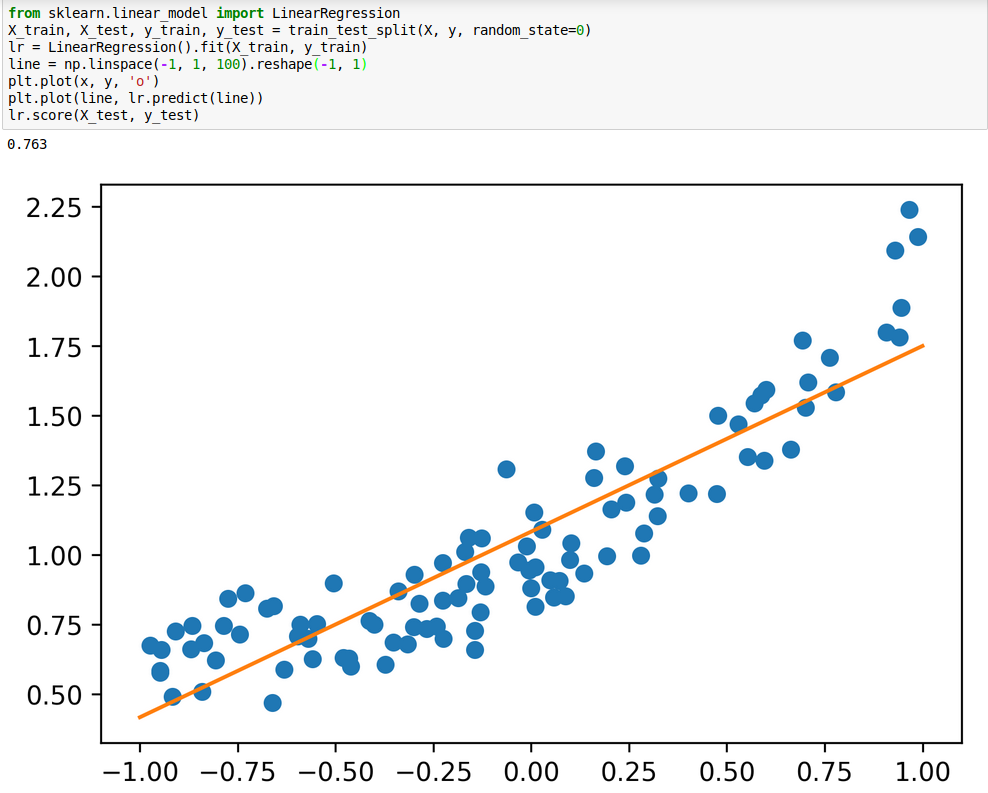
Polynomial Features
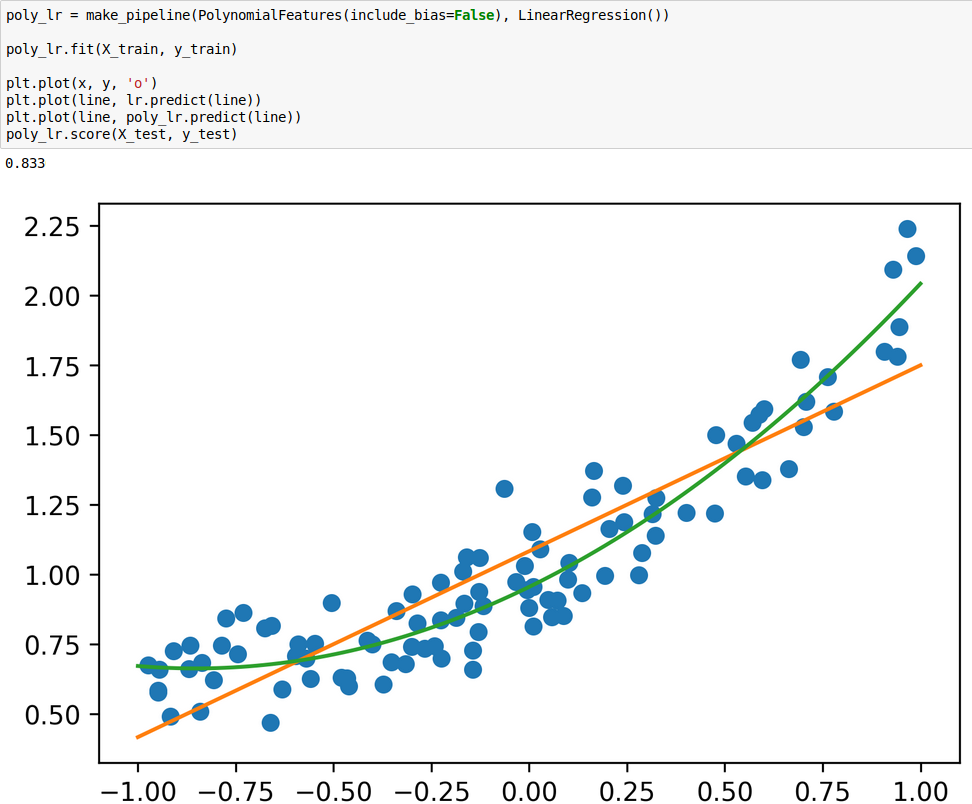
Polynomial Features
PolynomialFeatures()adds polynomials and interactions.- Transformer interface like scalers etc.
- Create polynomial algorithms with
make_pipeline!
Polynomial Features
from sklearn.preprocessing import PolynomialFeatures
poly = PolynomialFeatures()
X_bc_poly = poly.fit_transform(X_bc_scaled)
print(X_bc_scaled.shape)
print(X_bc_poly.shape)
(379, 13) (379, 105)
scores = cross_val_score(RidgeCV(), X_bc_scaled, y_train, cv=10)
print2(np.mean(scores), np.std(scores))
(0.693, 0.111)
scores = cross_val_score(RidgeCV(), X_bc_poly, y_train, cv=10)
print2(np.mean(scores), np.std(scores))
(0.829, 0.071)
Discretization and Binning
- Loses data.
- Target-independent might be bad
- Powerful combined with interactions to create new features!